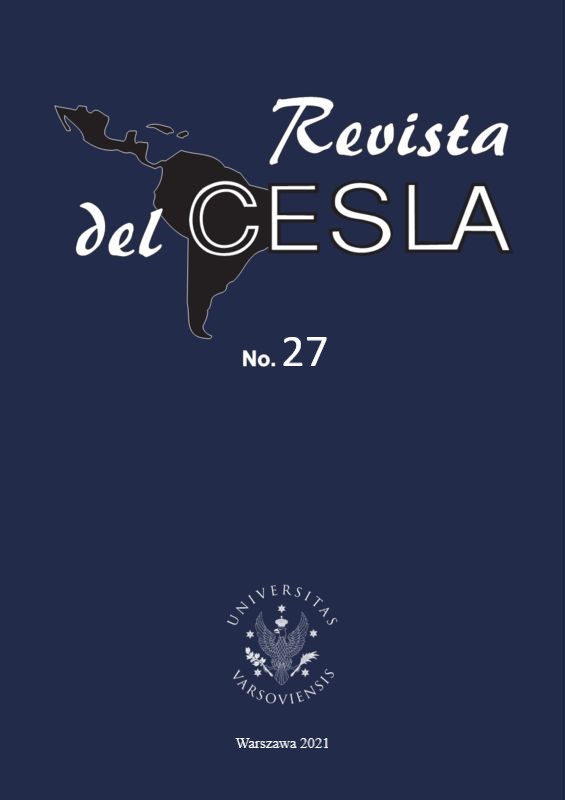Dialéctica víctima-perpetrador como causación de la novela Con sangre de hermanos
Palavras-chave:
perpetradores, guerras civiles nicaragüenses, FSLN, violencia política, dictaduras, trauma, comunismoResumo
Este escrito trata acerca de la novela Con sangre de hermanos. Demuestra cómo los personajes primero son profundamente afectados por la represión de la Guardia Nacional somocista. Luego ellos afrontan los traumas y las disociaciones de una forma no ética: asesinando y persiguiendo a los miembros de la oposición. Más aun, los sandinistas parecen anuentes a ser “zonas grises” y a sacrificarse a sí mismos por el partido izquierdista. Culmina el escrito con un FSLN (Frente Sandinista de Liberación Nacional) alimentado por los crímenes y las traiciones contra sus propios miembros. En conclusión, tenemos que el libro se estructura como una novela de perpetradores.
Referências
Aguirre, E. (2011). Con sangre de hermanos. Uruk Editores.
Amnistía Internacional. (2018). Sembrando el terror: de la letalidad a la persecución en Nicaragua. https://www.amnesty.org/download/Documents/AMR4392132018SPANISH.PDF
Aristóteles (1999). Poética (V. García, trad.). Gredos.
Bothmann, A. (2015). Transitional Justice in Nicaragua 1990–2012. Drawing a Line Under the Past. Springer VS. https://doi.org/10.1007/978-3-658-10503-7
Bouwknegt, T. B. (2017). Duch Is Dead. Book review: Alexander Laban Hinton, Man or Monster? The Trial of a Khmer Rouge Torturer (Durham & London: Duke University Press, 2016). Journal of Perpetrator Research, 1(1), 110–114. https://doi.org/10.21039/jpr.v1i1.42
Camus, A. (2008). El hombre rebelde. Alianza Editorial.
Critchell, K., Knittel, S., Perra, E., & Ümit Üngör, U. (2017). Editors’ Introduction. Journal of Perpetrator Research, 1(1), 1–27. https://doi.org/10.21039/jpr.v1i1.51
Esparza, M. (2018). Examining the Political and Military Power in Latin America: A Response to Christian Gudehus. Journal of Perpetrator Research, 2(1), 20–25. https://doi.org/10.5334/jpr.2.1.9
Hatcher, R. (2018). The Power of Memory and Violence in Central America. Springer International Publishing. https://doi.org/10.1007/978-3-319-89785-1
Hinton, A. L. (2016). Man or Monster? — The Trial of a Khmer Rouge Torturer. Duke University Press.
Levi, P. (1989). The drowned and the saved. Vintage International.
Lifton, R. (2005). Americans as Survivors. The New England Journal of Medicine, 352(22), 2263–2265.
Lifton, R. (2006, 14 de junio). Haditha: In an ‘Atrocity-Producing Situation’ — Who Is to Blame? Editor & Publisher Magazine. https://www.editorandpublisher.com/stories/haditha-in-an-atrocity-producing-situation-who-is-to-blame,80313?
Locke, J. (2005). (C. Amor & P. Stafforini, trad.). Ensayo sobre el gobierno civil. Universidad Nacional de Quilmes y Prometeo Libros.
Maringira, G. (2016). Political violence within army barracks: desertion and loss among exiled Zimbabwean soldiers in South Africa. Social Dynamics, 42(3), 429–442. https://doi.org/10.1080/02533952.2016.1238390
Merleau-Ponty, M. (1957). Las aventuras de la dialéctica. (J. Escudé, trad.). Ediciones Leviatán.
Montesquieu, C. (2010). Del espíritu de las leyes. Editorial Porrúa.
Morag, R. (2013). Waltzing with Bashir: Perpetrator Trauma and Cinema. I.B. Tauris.
Morag, R. (2018). On the Definition of the Perpetrator: From the Twentieth to the Twenty-First Century. Journal of Perpetrator Research 2(1), 13–19. https://doi.org/10.5334/jpr.2.1.19
Nygren, A. (2003). Violent conflicts and threatened lives: Nicaraguan experiences of wartime displacement and postwar distress. Journal of Latin American Studies, 35(2), 367–393. https://doi.org/10.1017/S0022216X03006758










